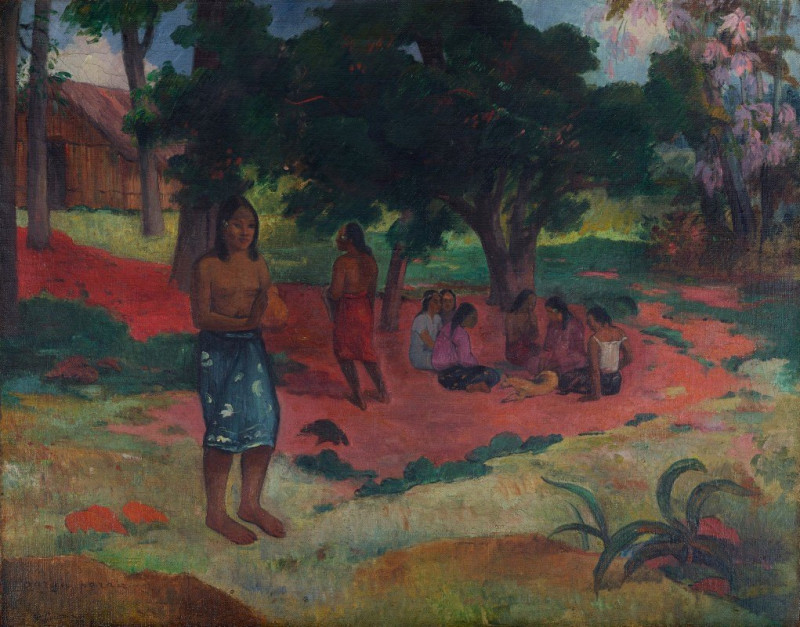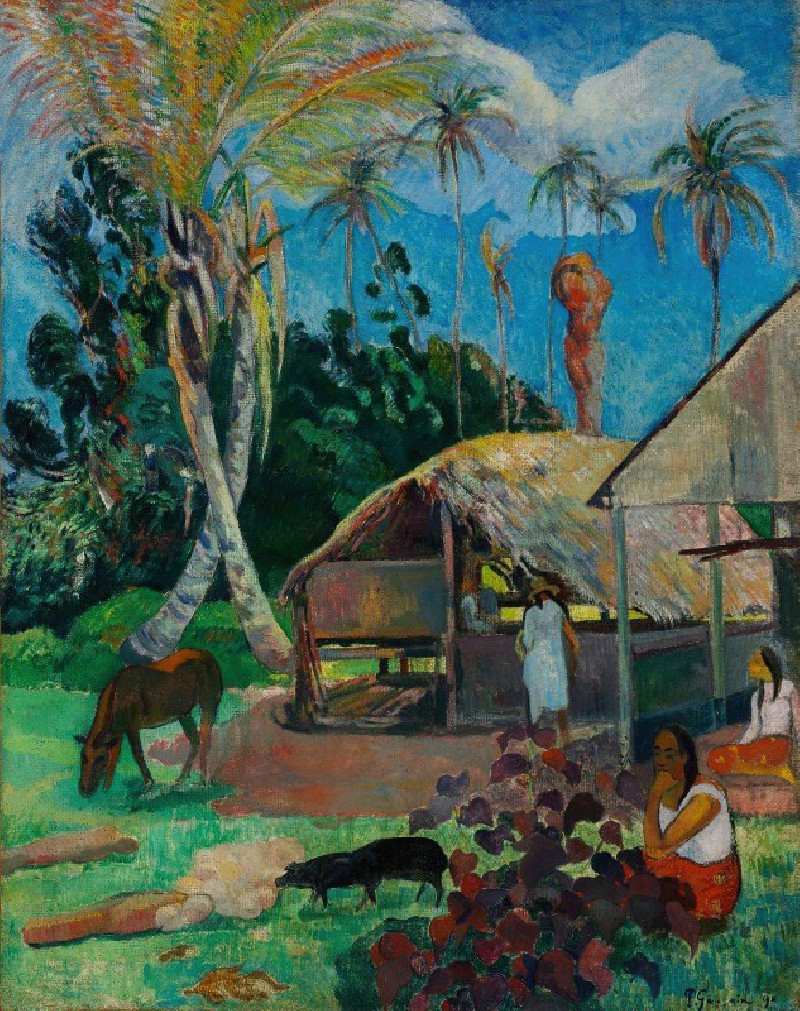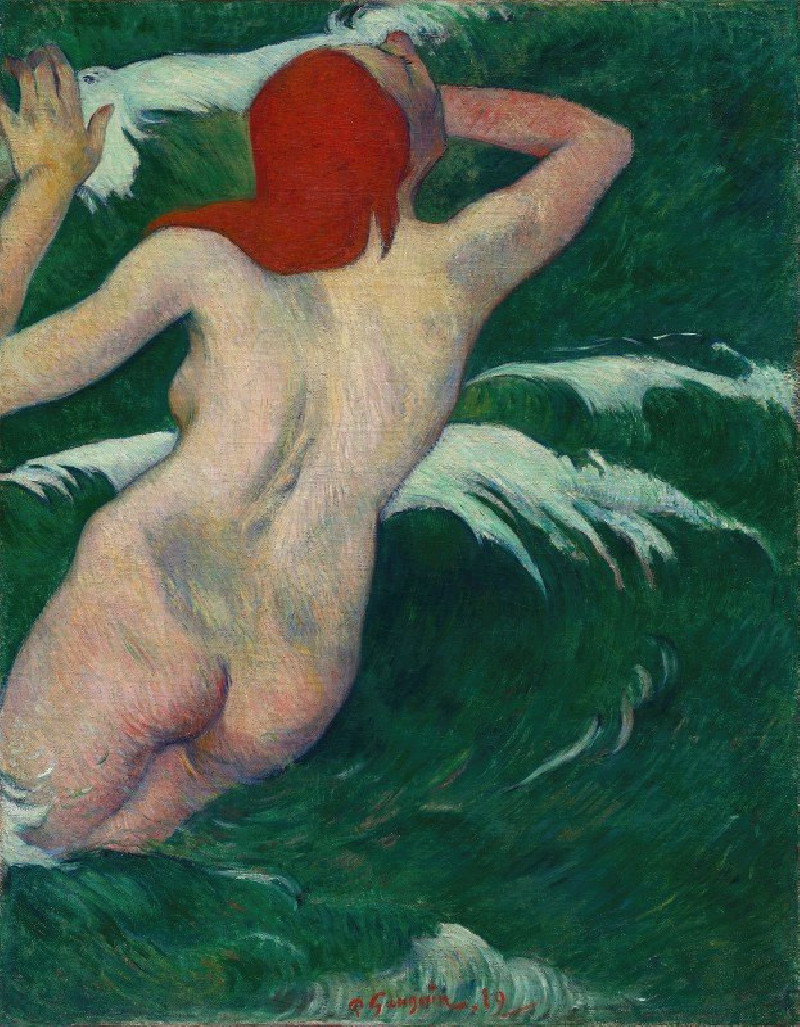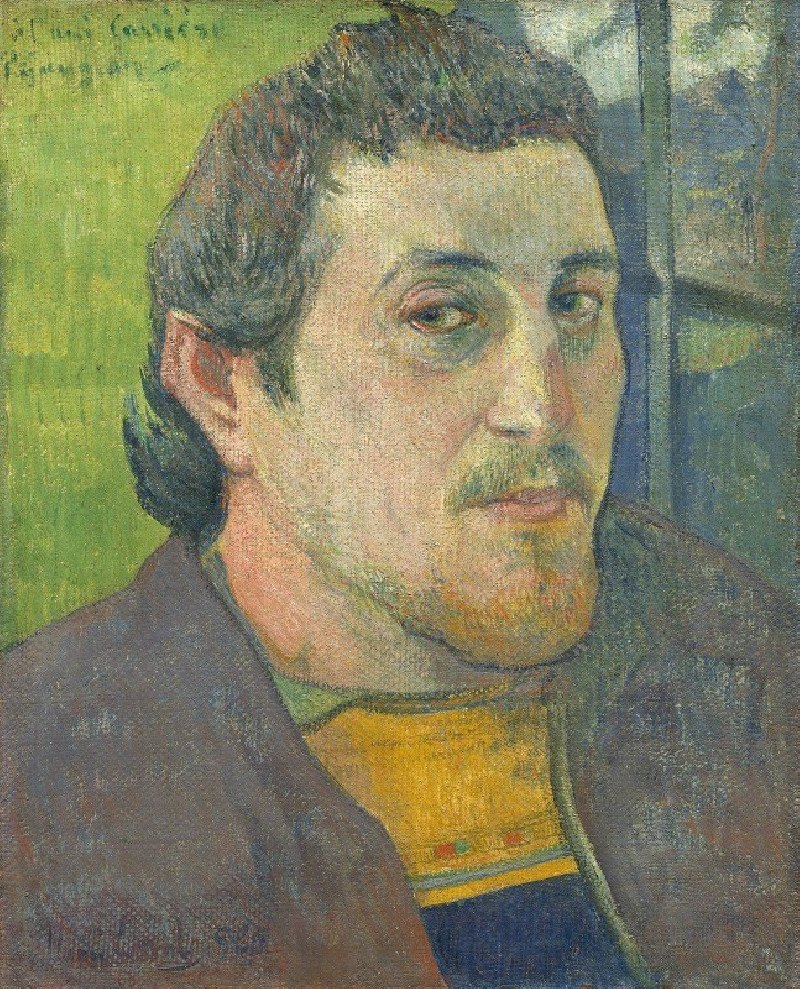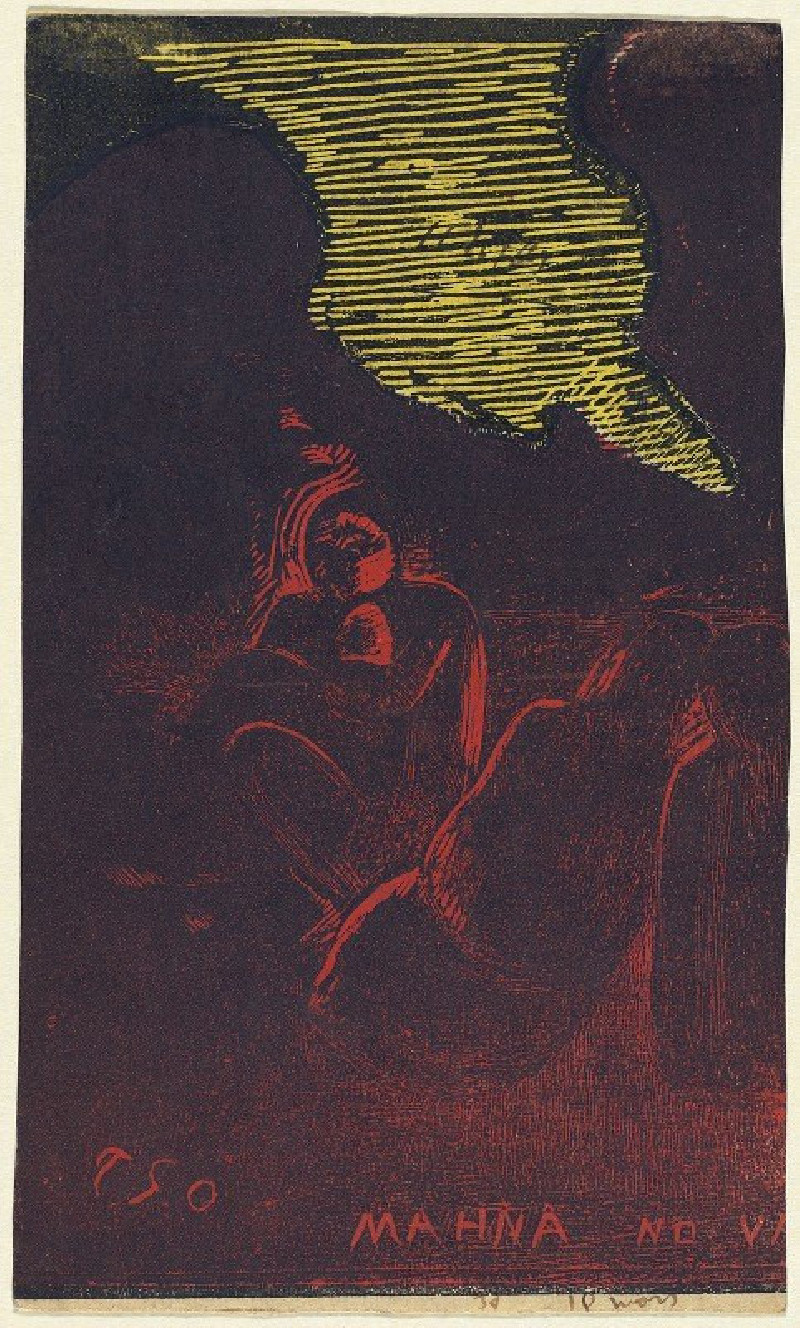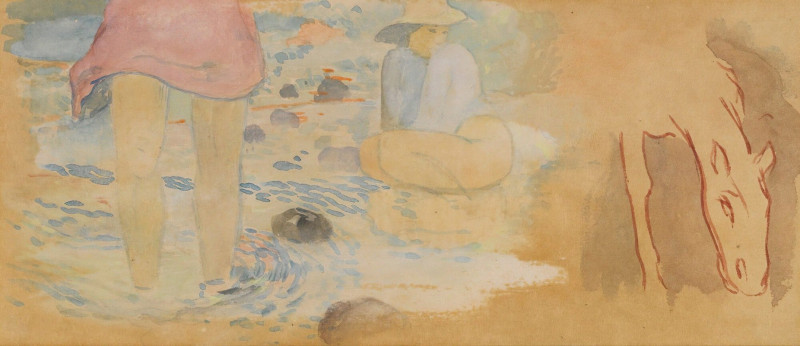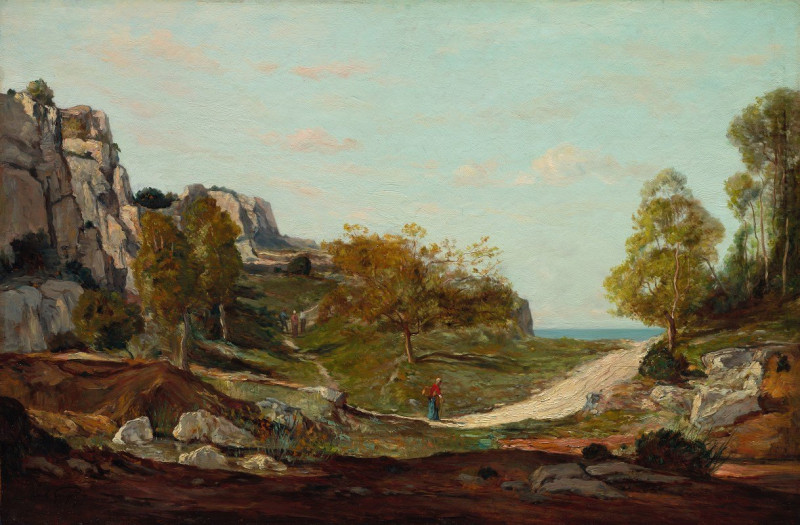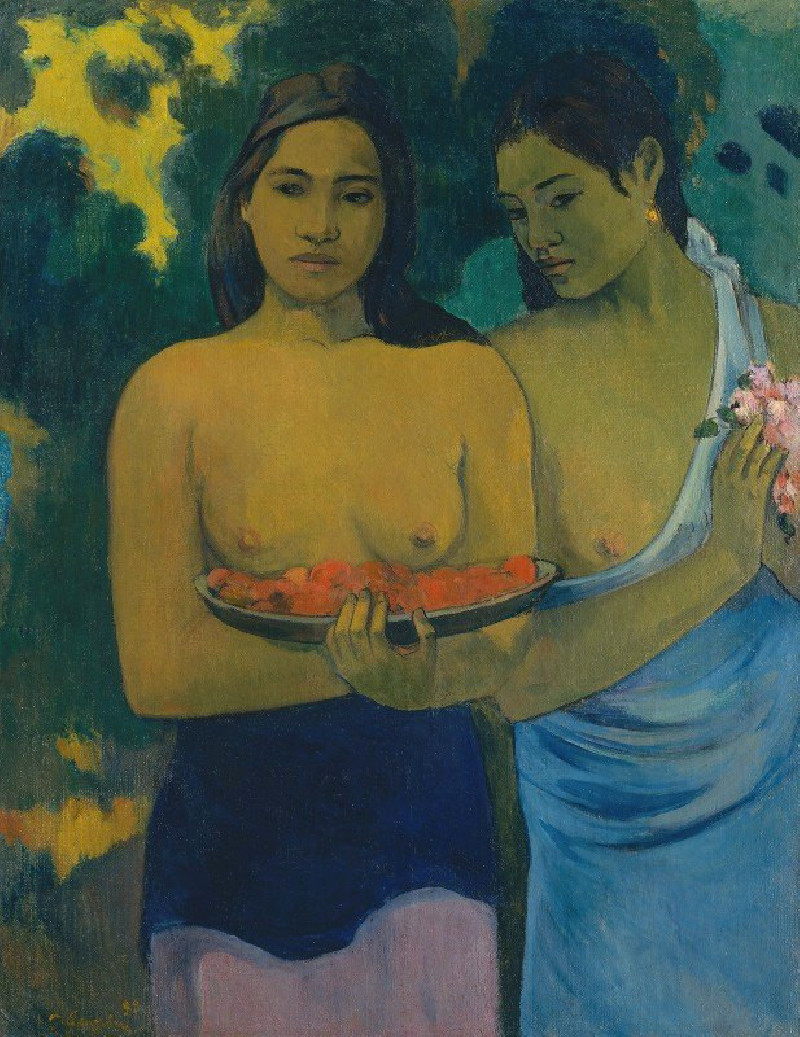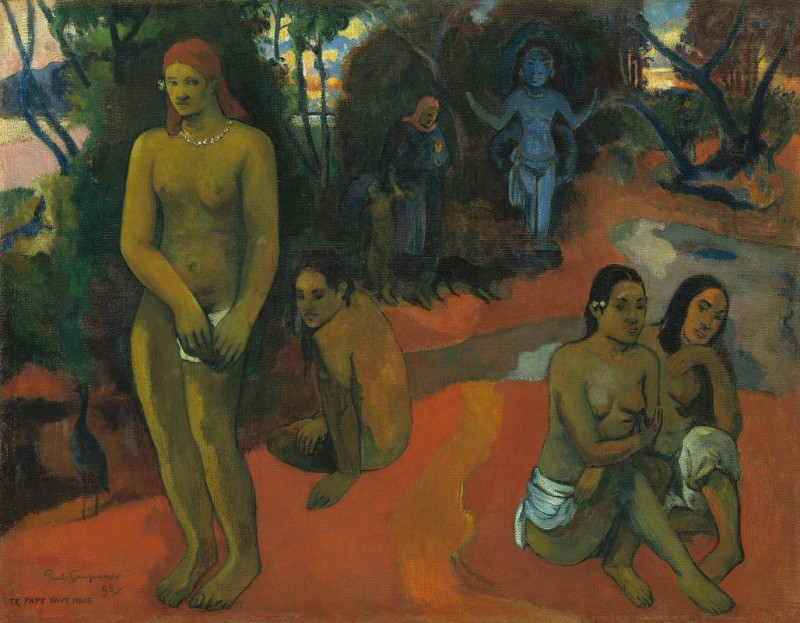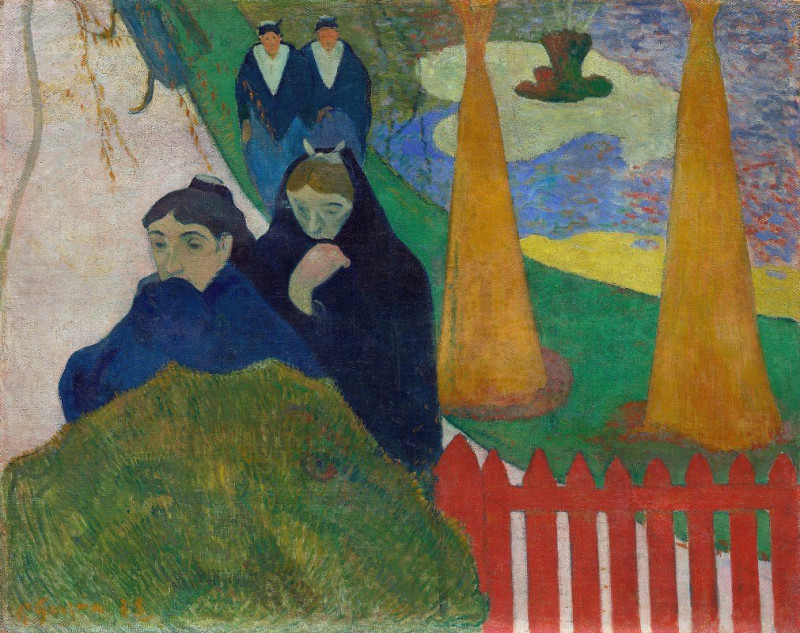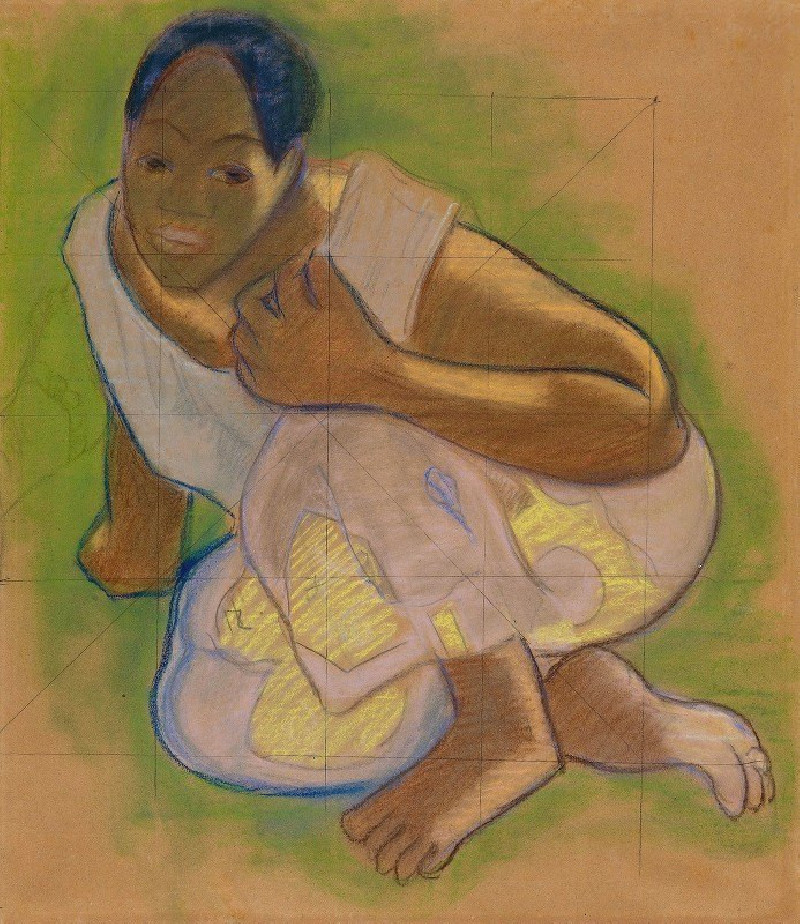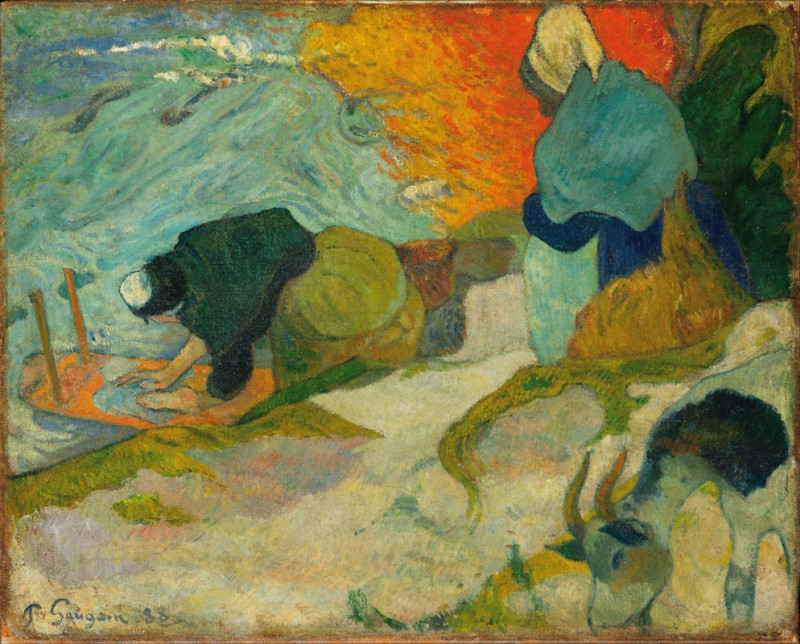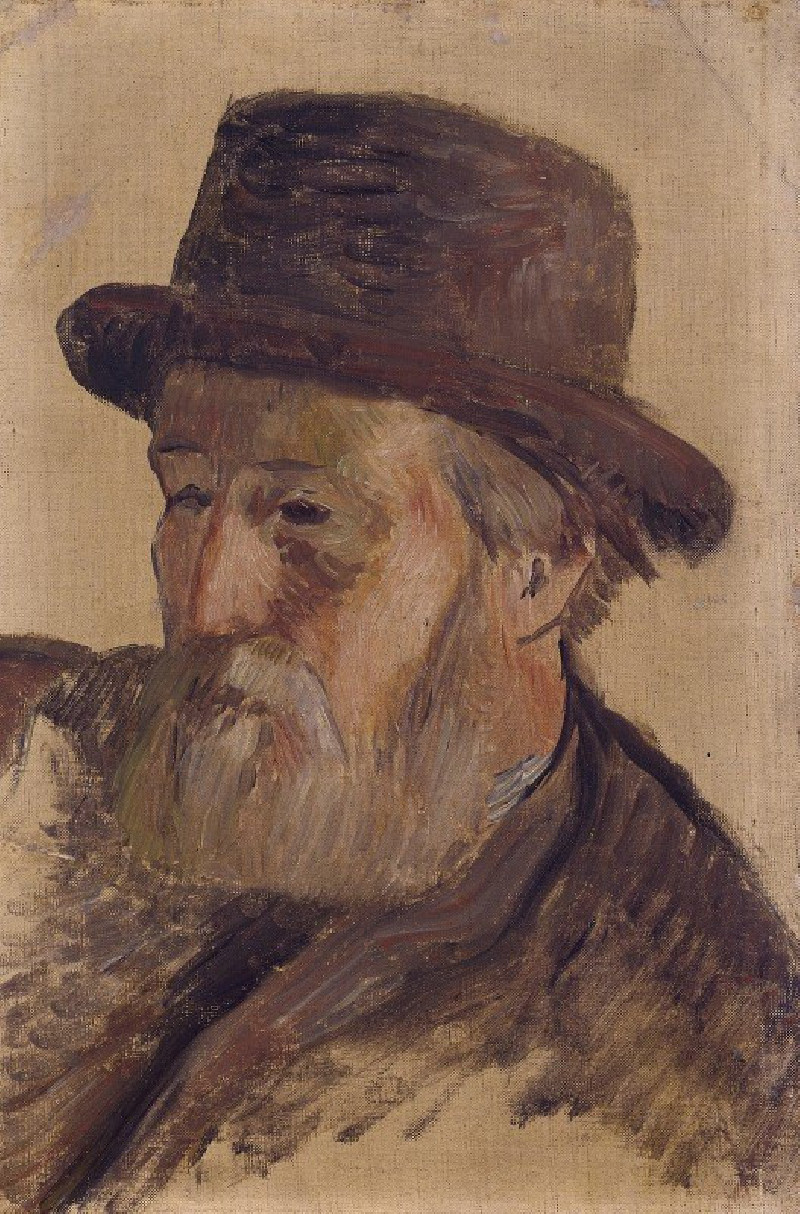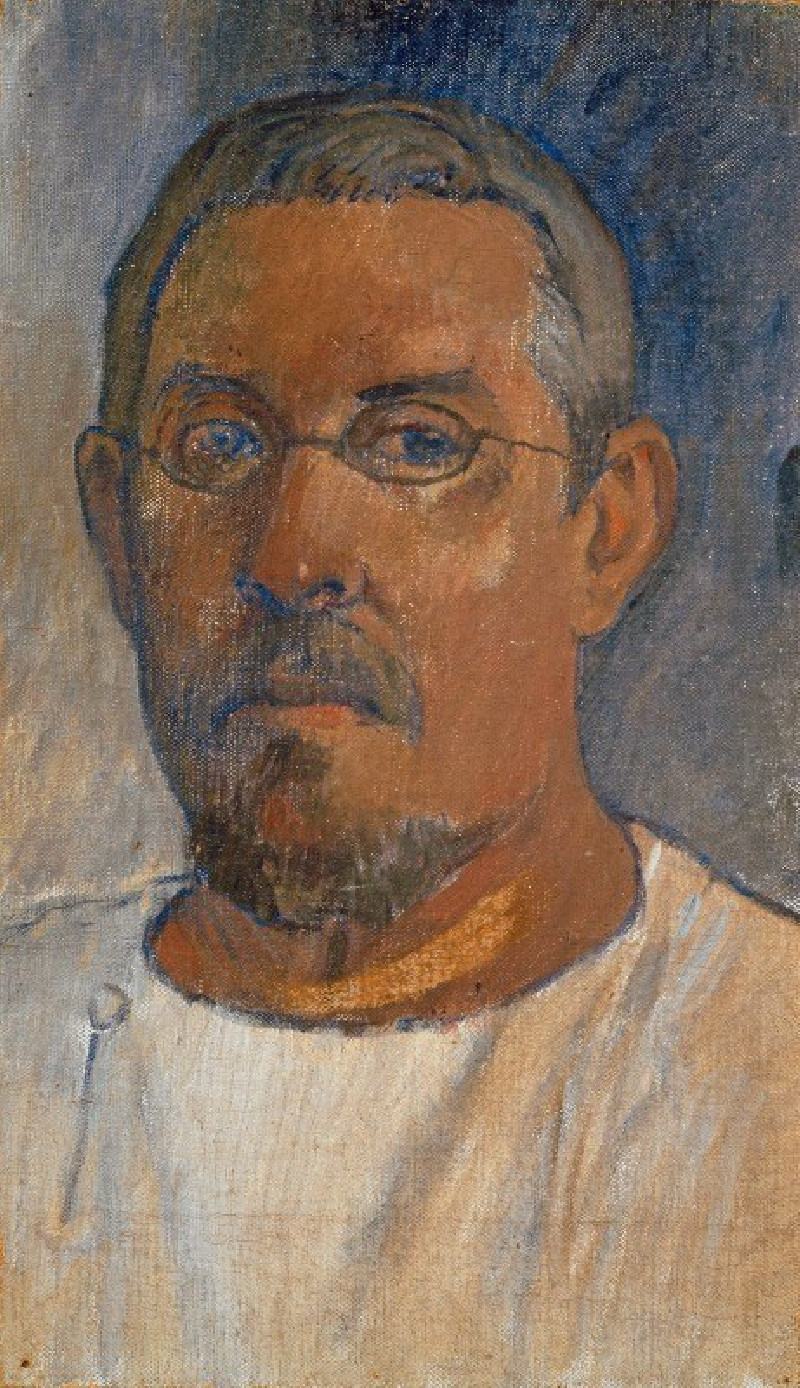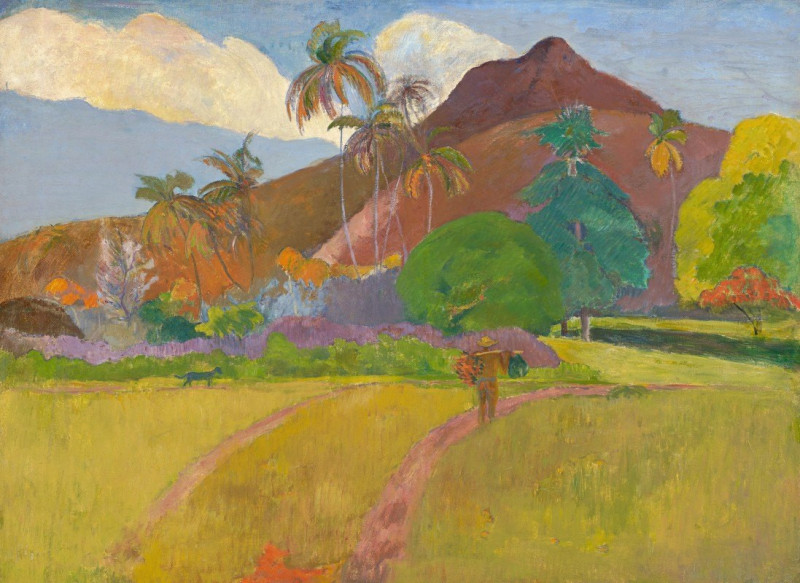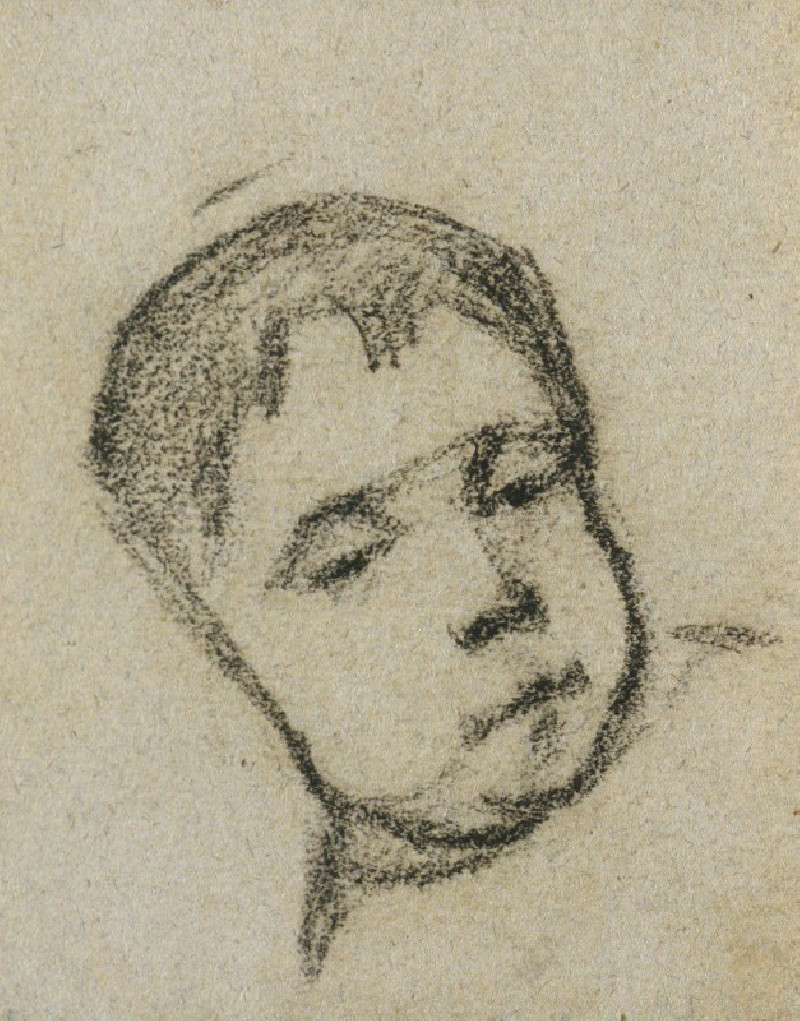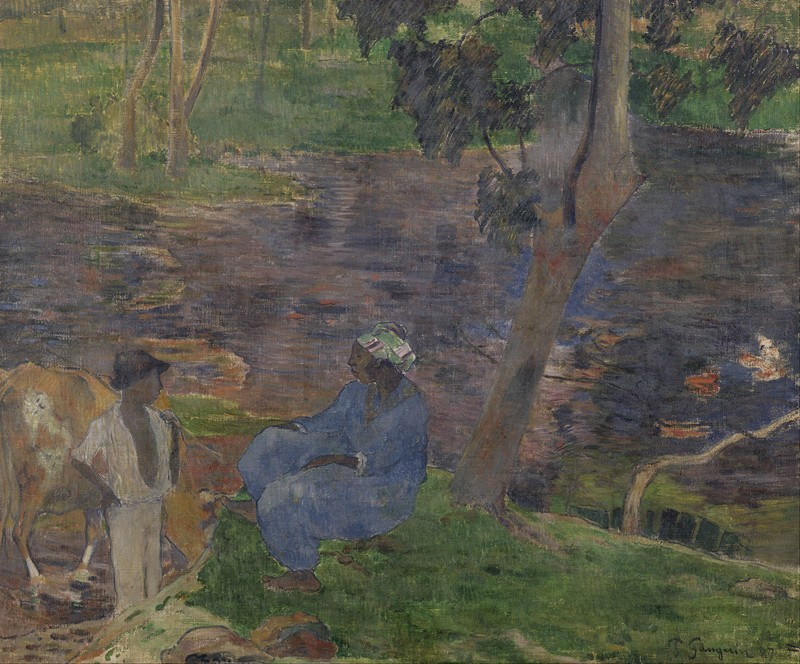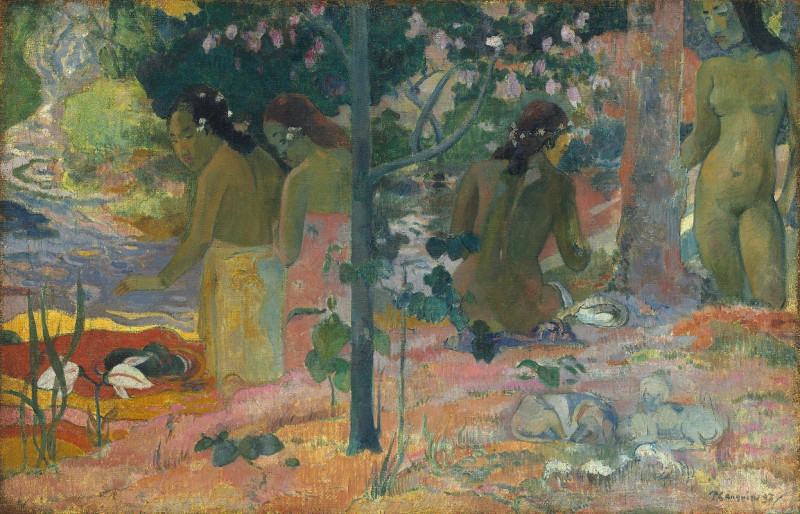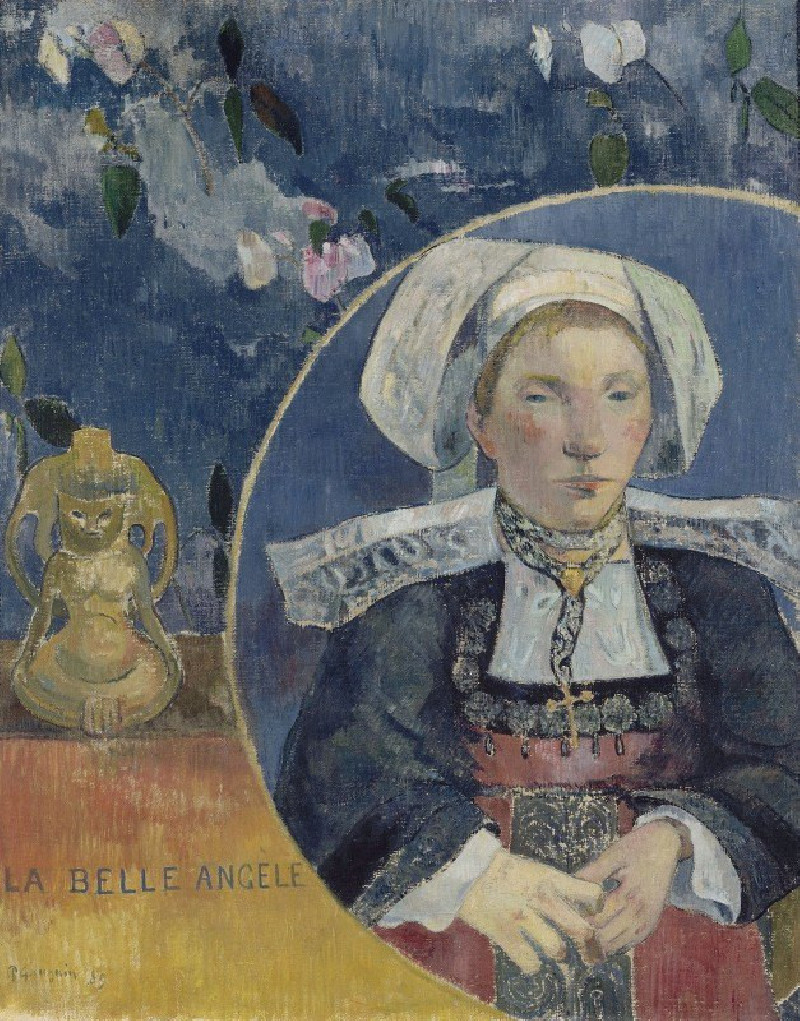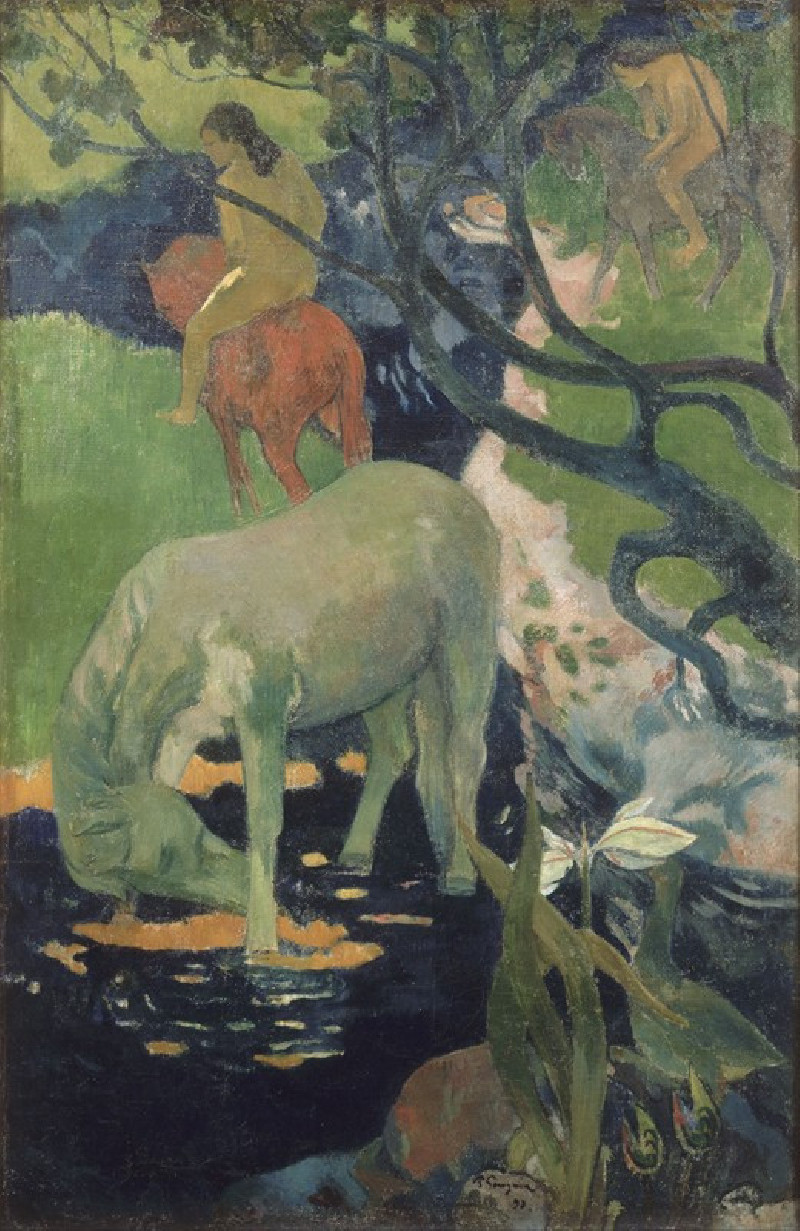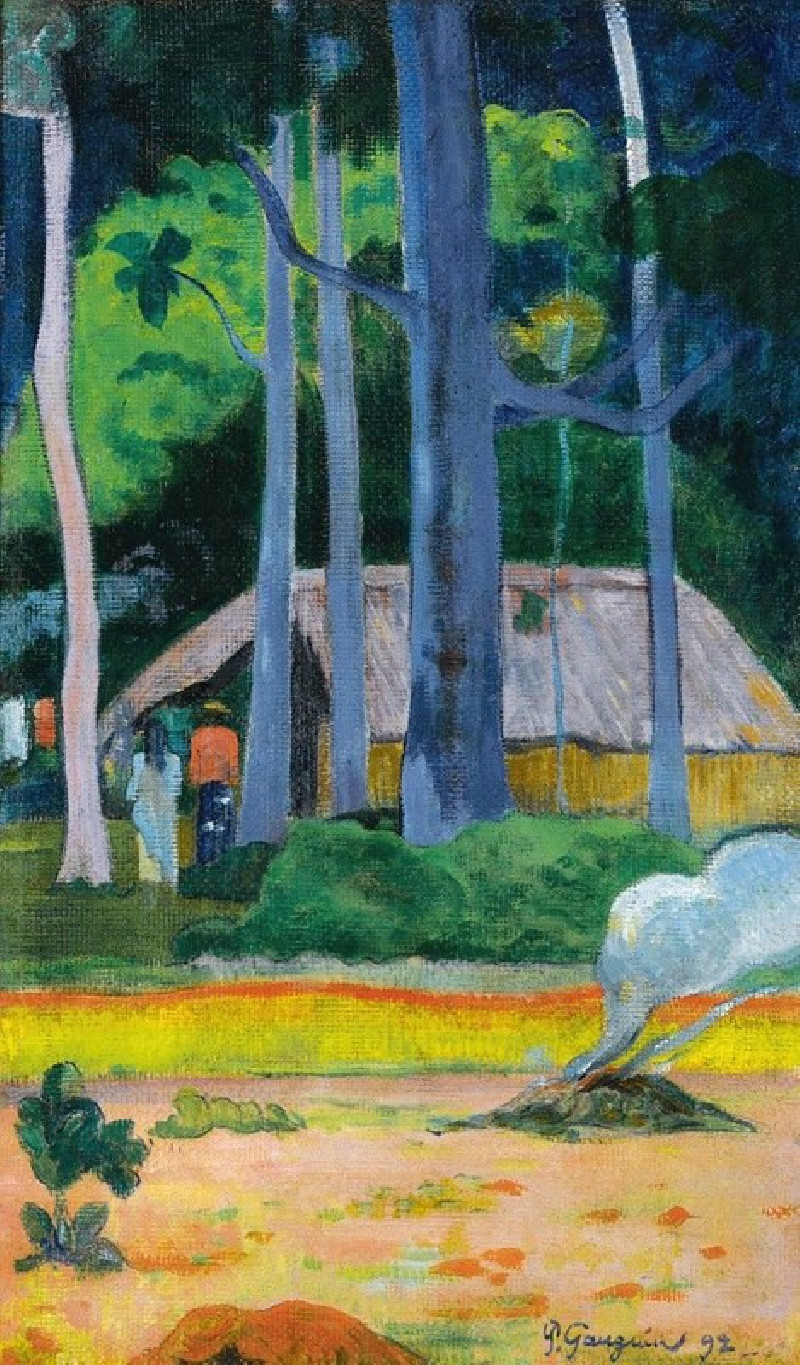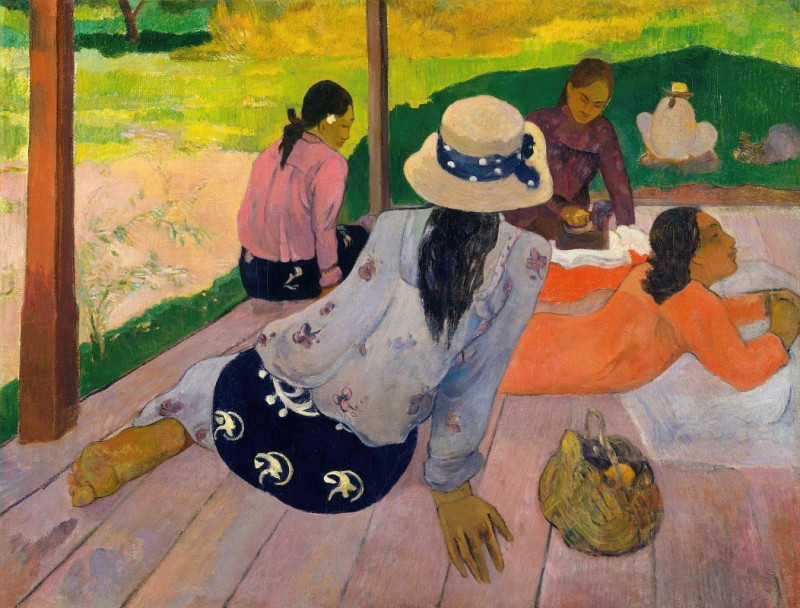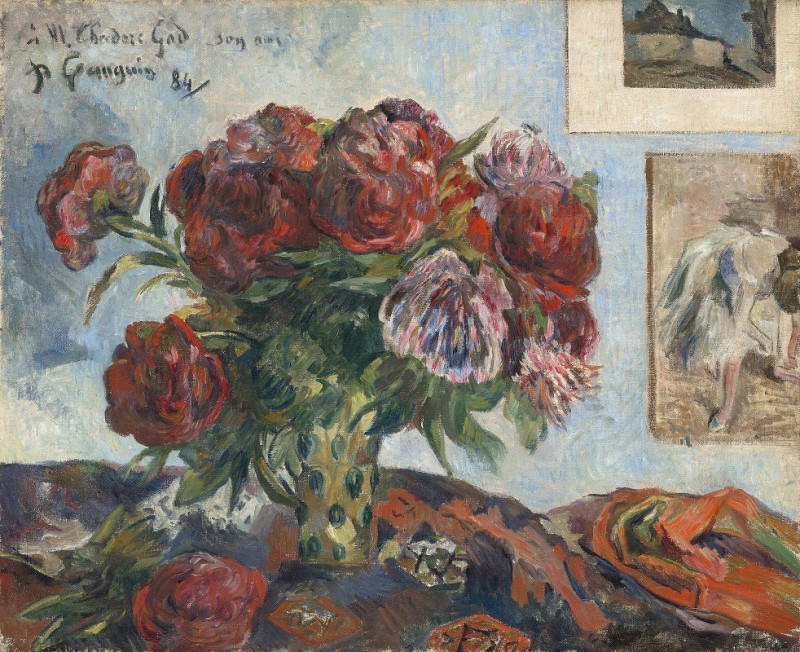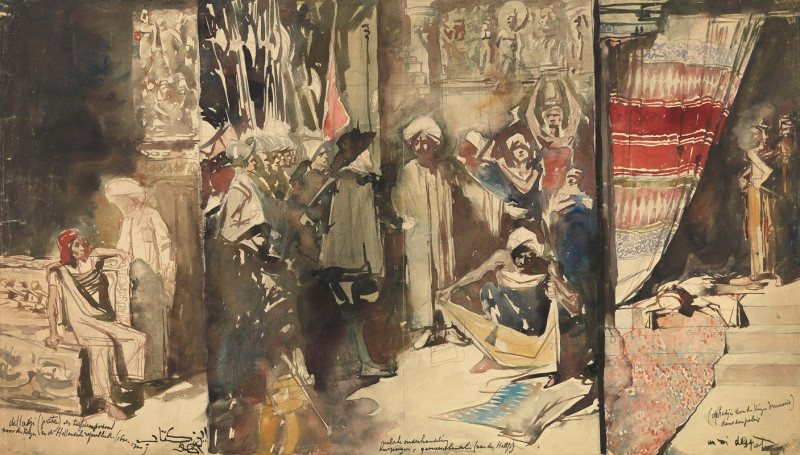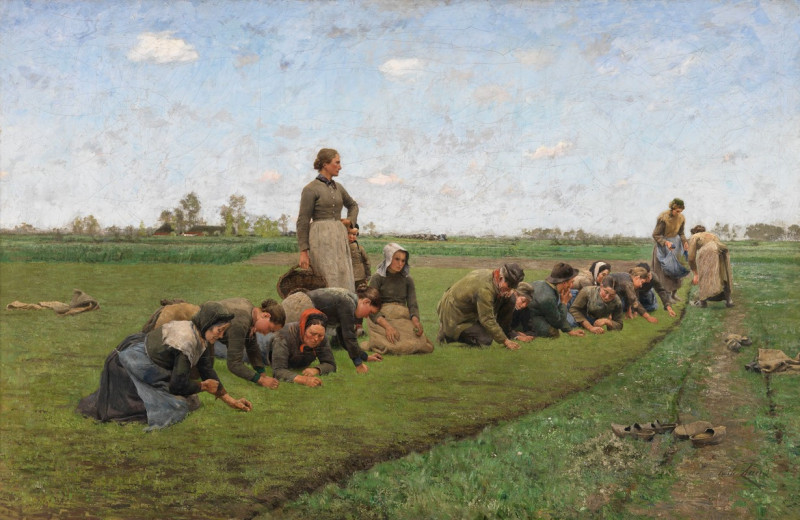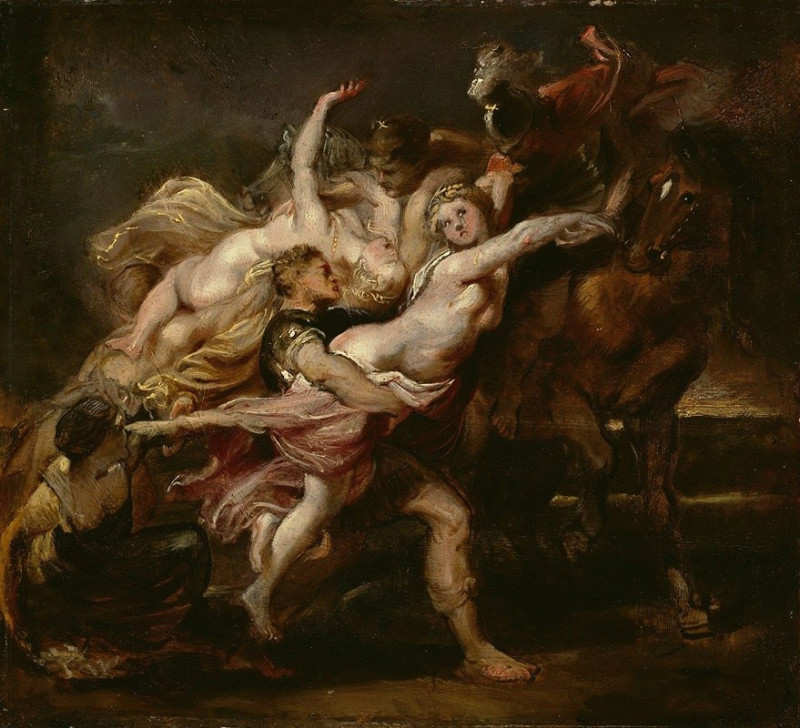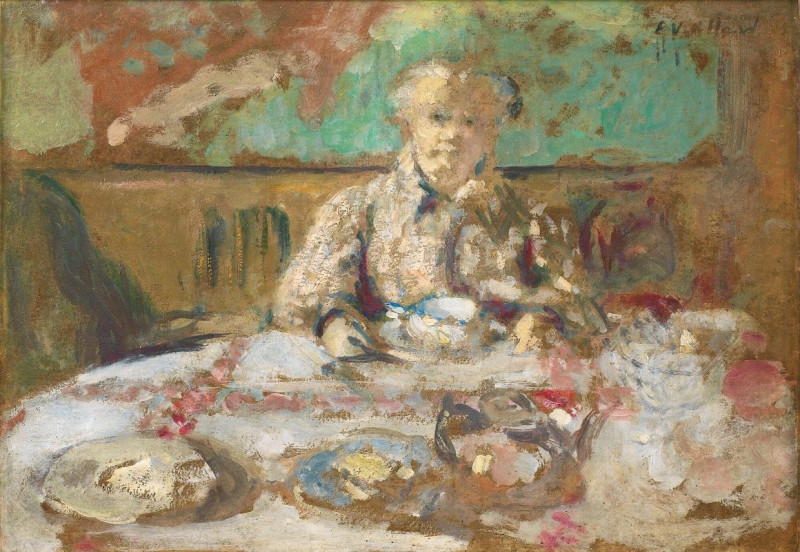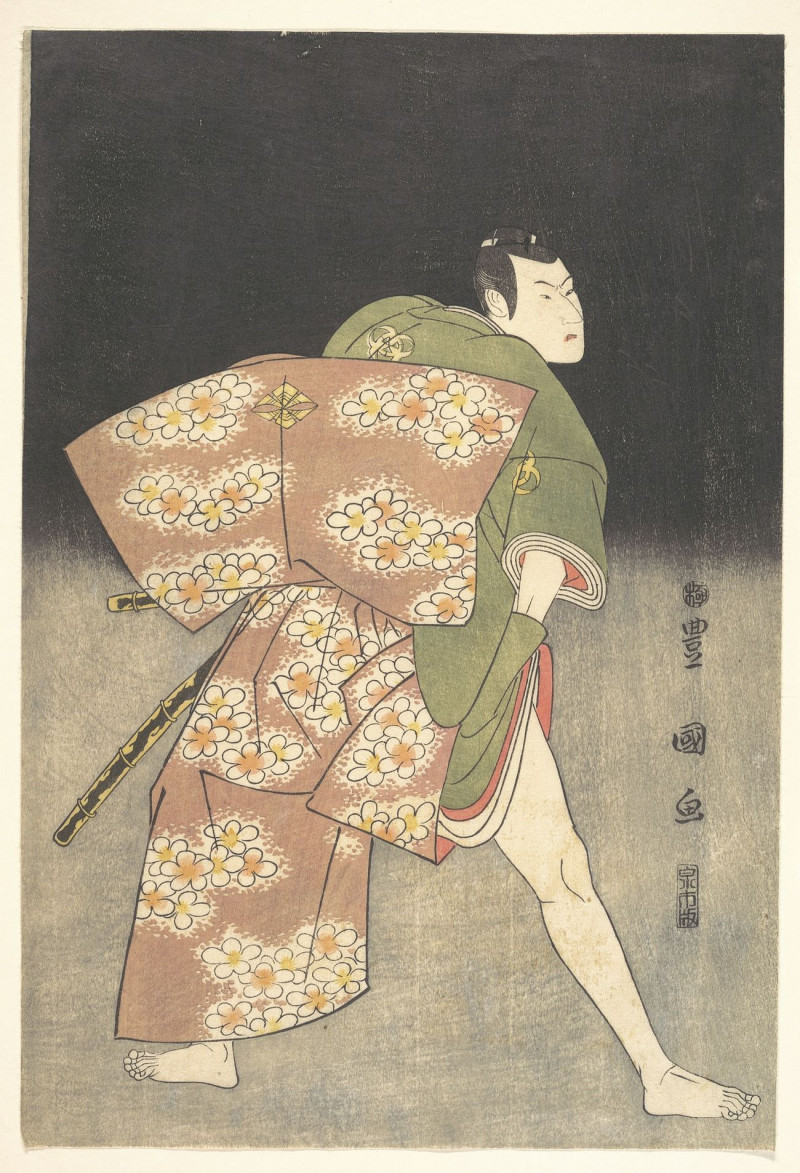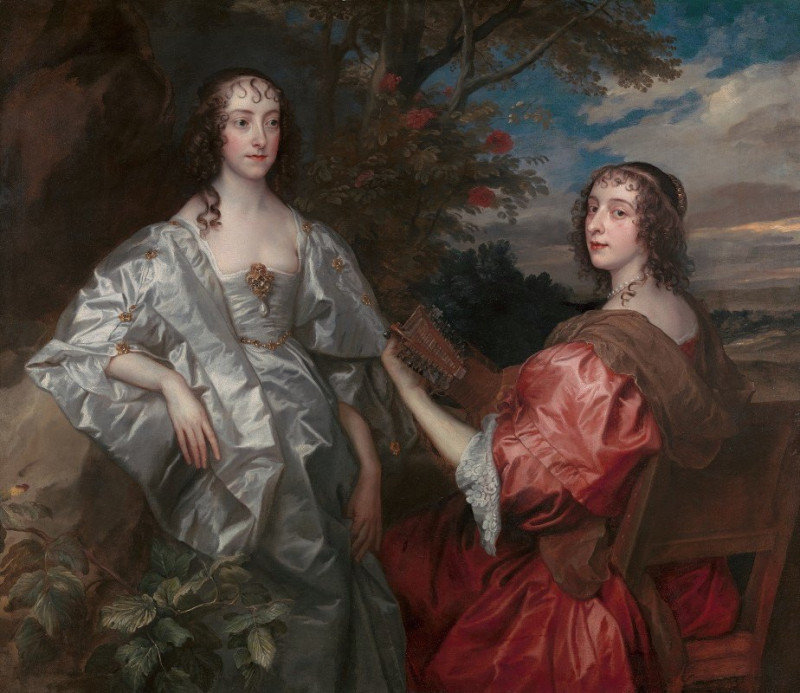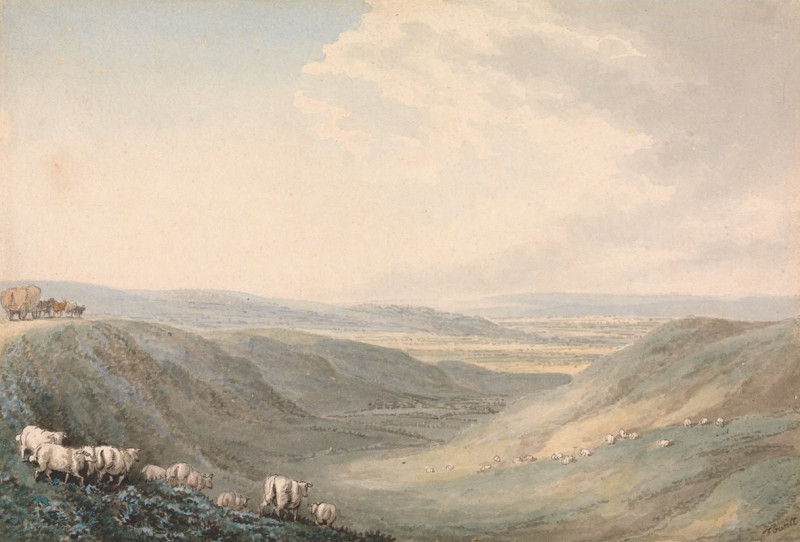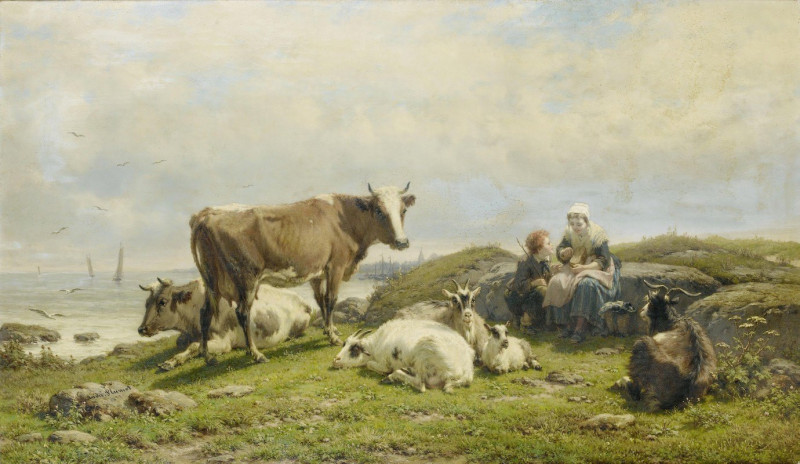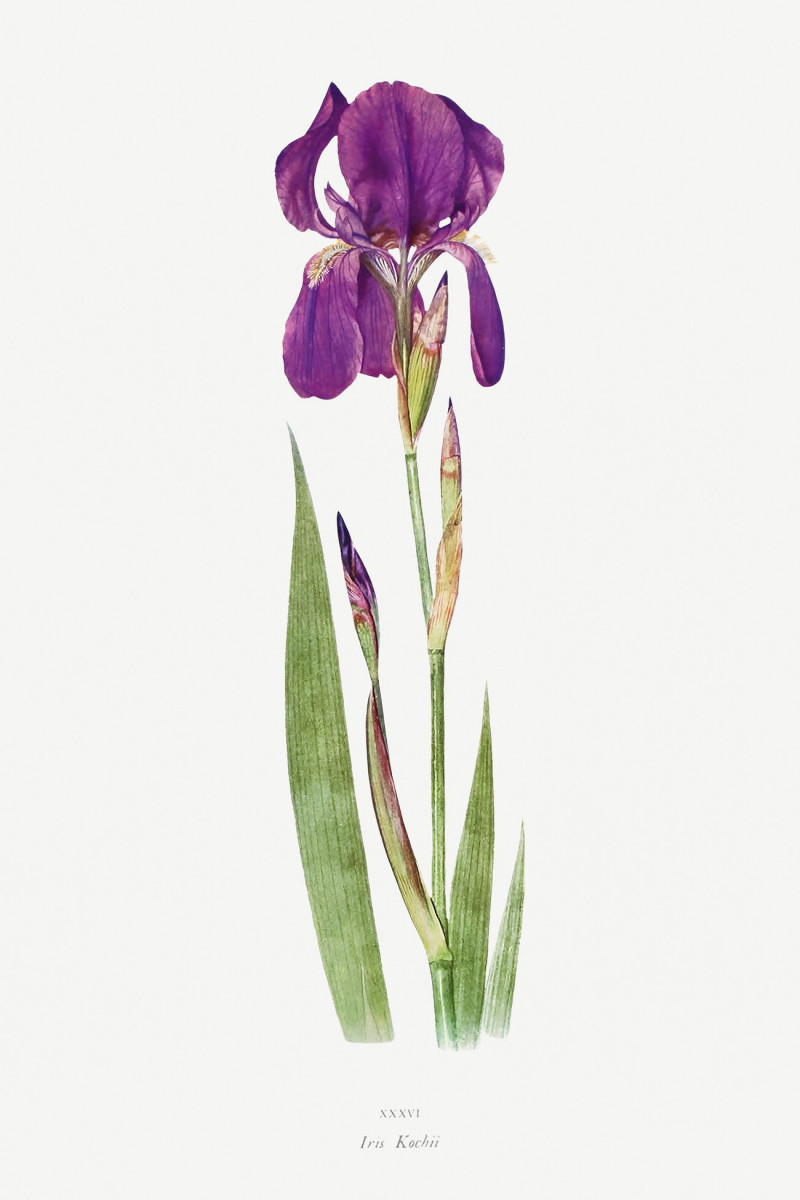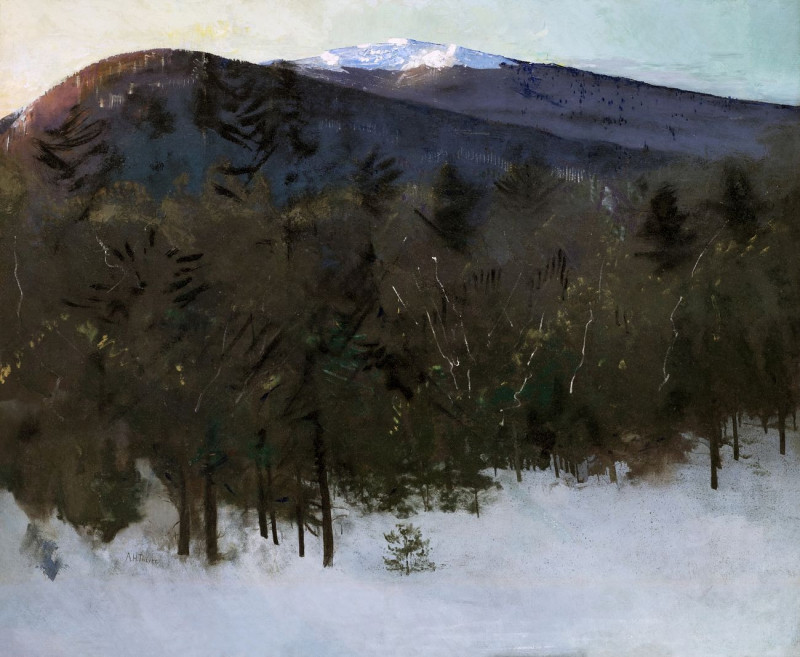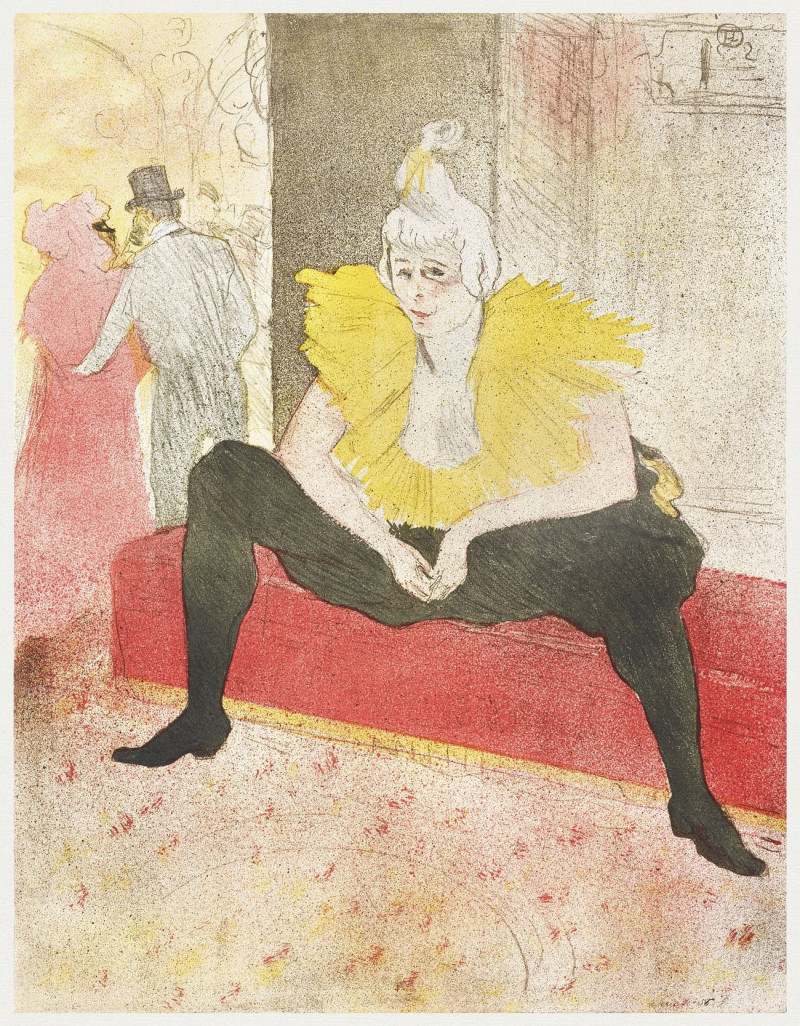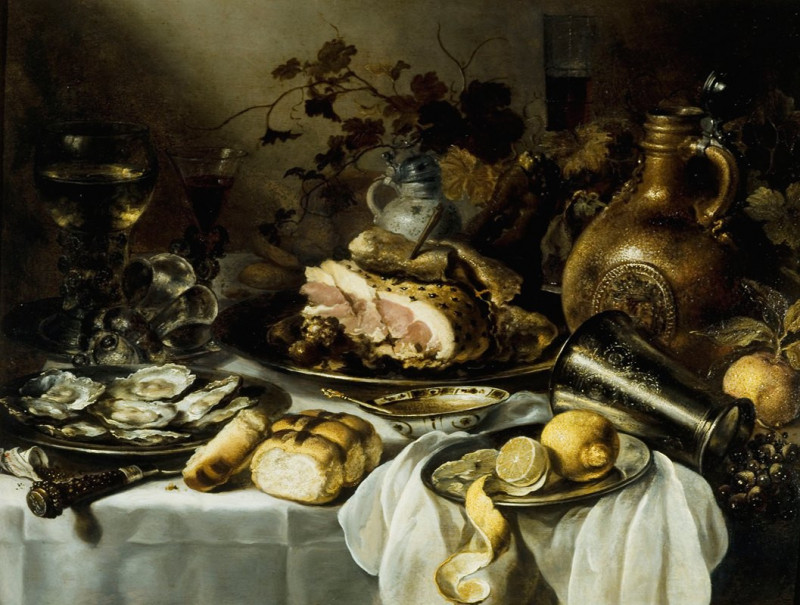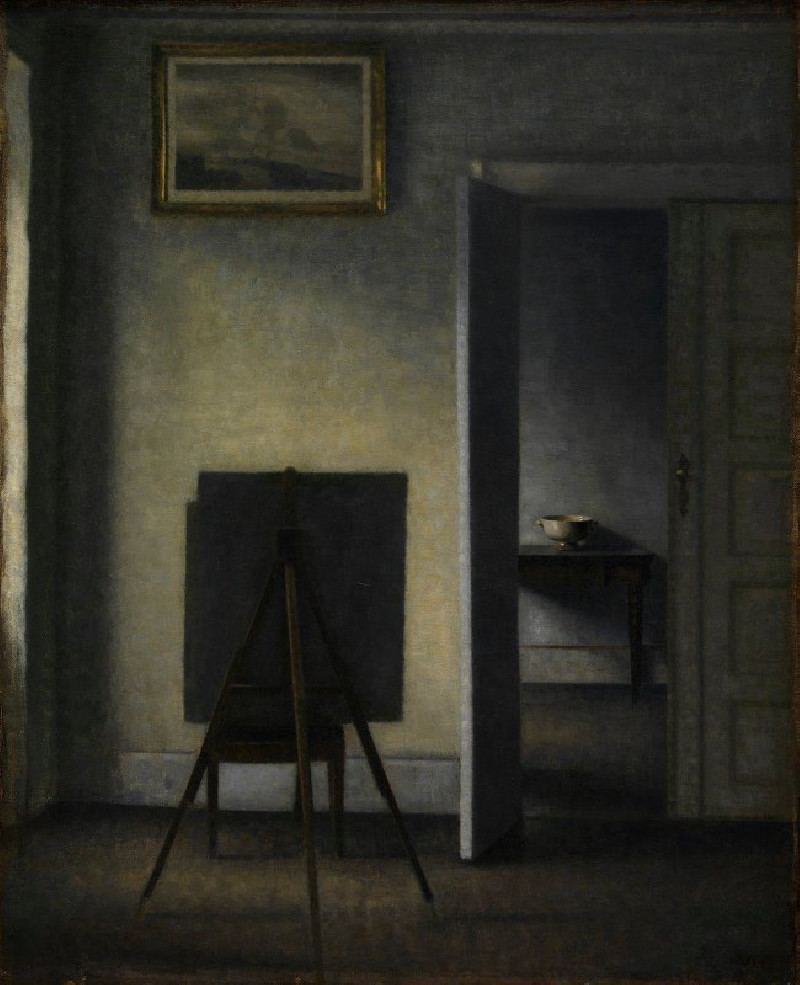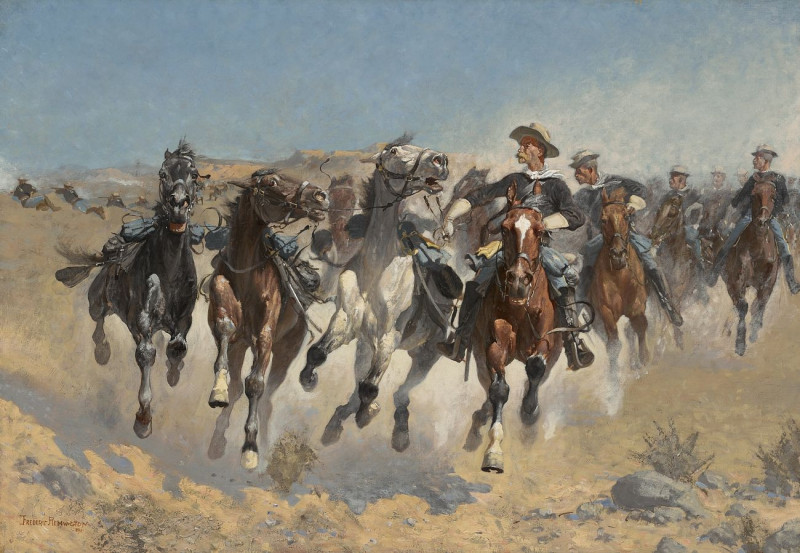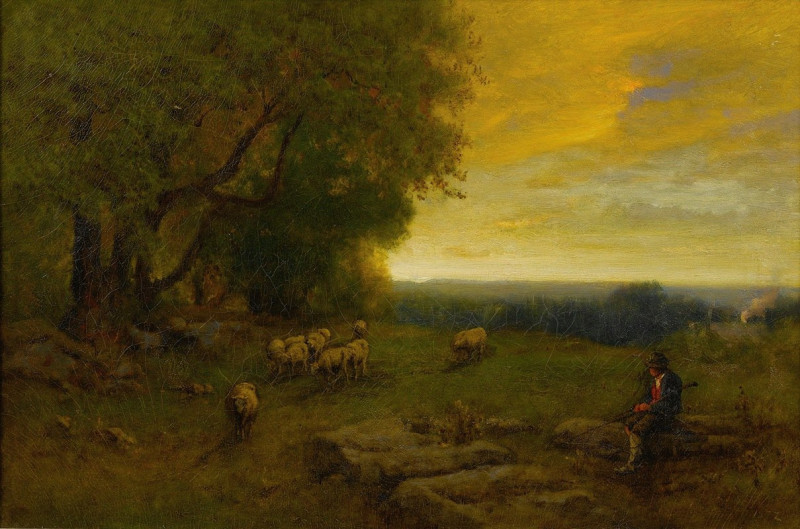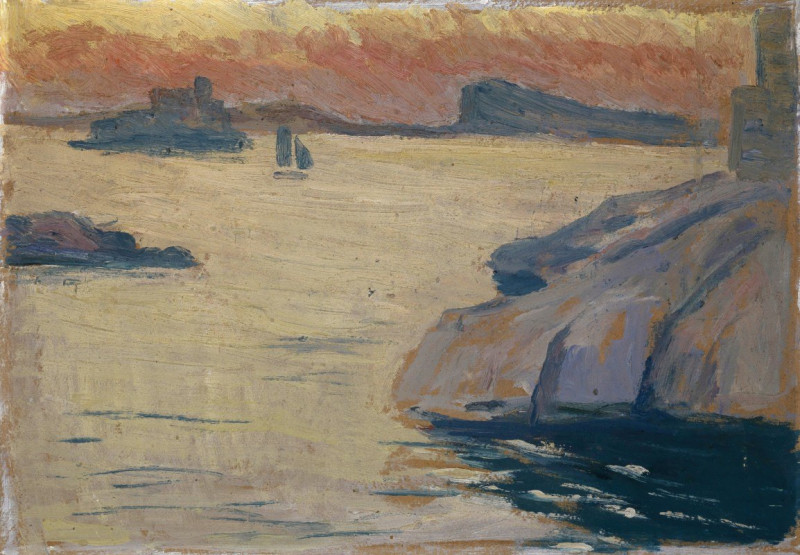Parau Parau (Whispered Words) (1892)
Technique: Giclée quality print
Recommended by our customers
More about this artwork
The painting titled "Parau Parau (Whispered Words)" by Paul Gauguin, created in 1892, is a captivating work that encapsulates the serene and enigmatic atmosphere of Tahiti, an island that profoundly influenced Gauguin’s artistic direction. This vivid artwork immerses the viewer in a tranquil island scene, characterized by lush vegetation and the vibrant colors Gauguin is known for.The foreground of the painting features a Tahitian woman standing alone, her gaze directed towards the viewer, adding a layer of intimacy and immediacy to the composition. She is adorned in a traditional wrap skirt with a subtle floral pattern, which contrasts with her solid dark top, harmonizing beautifully with the earthy tones of the ground and the vegetation. Behind her, a group of Tahitian figures is gathered under the shade of verdant trees, engaged in a quiet conversation, which the title suggests are "whispered words." Their relaxed poses and the way they are huddled together evoke a sense of community and casual interaction, typical of Gauguin's depictions of Tahitian life.The color palette is rich with deep greens, soft pinks, and fiery reds that echo the natural vibrancy of the Tahitian landscape. These colors not only enrich the visual impact of the painting but also reflect the artist’s departure from the realistic colors typical of European art at the time, embracing instead a more expressive and subjective approach to color.Overall, "Parau Parau (Whispered Words)" stands out as a testament to Gauguin’s unique ability to blend the visual elements of Post-Impressionism with the thematic exploration of cultural identity and human connection, encapsulating the essence of Tahitian life during his stay.
Delivery
Returns
Eugène Henri Paul Gauguin was a French Post-Impressionist artist. Unappreciated until after his death, Gauguin is now recognized for his experimental use of color and Synthetist style that were distinct from Impressionism. Toward the end of his life, he spent ten years in French Polynesia. The paintings from this time depict people or landscapes from that region.

